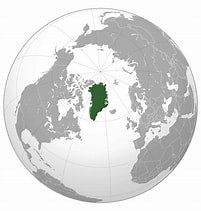NO1,「なぜ今戦うの?」— 印パ紛争の行方と日本で学ぶパキスタン留学生の思い
 イメージ
イメージ
「なぜ今戦うの?」— 印パ紛争の行方と日本で学ぶパキスタン留学生の思い
2025年9月15日現在、世界は再び不安定な局面を迎えています。
これまでにもロシアによるウクライナ侵攻や、イスラエルとパレスチナの対立など、
多くの局地戦が世界各地で続いてきました。
そして今、新たに注目を集めているのがインドとパキスタンの紛争です。
「なぜ今、戦うのか?」という疑問は、世界中の人々の心に浮かんでいるのではないでしょうか。
印パ対立の歴史的背景
インドとパキスタンの対立は、決して突然始まったものではありません。
長い歴史の積み重ねが現在の緊張につながっています。
- 印パ分離独立(1947年)
英領インドが独立する際、ヒンドゥー教徒中心の「インド」とイスラム教徒中心の
「パキスタン」に分離。
このとき数百万人が移住を余儀なくされ、暴動や虐殺で多くの命が失われました。
特にカシミール地方の帰属問題は現在も両国対立の核心です。 - カシミール紛争
イスラム教徒多数の地域でありながら、藩王がインドへの帰属を選んだため、
パキスタンが強く反発。
過去に三度の大規模戦争と1999年のカールギル紛争が起こり、
今も「印領」と「パ領」に分断されたままです。 - 宗教・民族対立
インドはヒンドゥー教徒が多数派ですが、2億人規模のイスラム教徒も存在。
一方のパキスタンはイスラム国家であり、宗教的アイデンティティの違いが
政治や領土問題と絡み、相互不信を深めています。 - 核兵器保有国同士
両国は核兵器を保有しており、衝突が激化すれば「核戦争」に発展するリスクが 常に懸念されます。

イメージ
国際社会の反応
印パ紛争は両国だけの問題にとどまりません。周辺諸国や大国も、
地政学的な観点から大きな関心を寄せています。
- アメリカ
インドを「対中戦略の要」と位置づけ、経済・安全保障面での協力を強化してきました。
一方、テロ対策やアフガニスタン情勢ではパキスタンも無視できない存在。
アメリカは両国との関係を維持しつつ、表向きは「自制」を呼びかけています。 - 中国
パキスタンとの経済・軍事的な結びつきが強く、
インドと対立するインド洋・国境問題でも連携する姿勢を見せています。
中国は一貫してパキスタン寄りの立場を取りつつ、
地域の不安定化が自国の経済に影響しないよう慎重に動いています。 - 日本
エネルギー輸入の多くをインド洋航路に依存するため、地域の安定は死活的に重要です。
日本政府はこれまでもODAや教育支援を通じて両国との関係を築いており、
紛争の激化には強い懸念を表明。
直接的な軍事関与はありませんが、国際社会での仲介や人道支援に貢献する可能性があります。
こうした国際的な思惑が交錯することで、印パ対立は「地域紛争」であると同時に
「世界的課題」となっているのです。
 イメージ
イメージ
日本で出会ったパキスタン留学生の声
私が「平和への期待」を持つ理由は、身近な変化にもあります。
コロナ禍が収束した後、日本にはインドやパキスタンからの観光客や留学生が増えました。
地方大学でも、パキスタンからの女性留学生を見かける機会が増え、
彼女たちは農業や理学分野で学びを深めています。
彼女たちと話すと必ず耳にするのは、「戦争や紛争に対する強い嫌悪感」です。
そして、インド人に対する思いを尋ねると、多くの学生がこう答えます。
「国と国は争っていても、私たち一般市民にとっては関係ありません。
普通に交流していますよ。」
この言葉に触れるたび、私は深い安心を覚えます。
国家間の対立と、市民同士の関係は必ずしも一致しないのだと実感するのです。
今後の展開と私たちにできること
印パ対立は歴史的・宗教的に根深く、短期間での解決は難しいでしょう。
しかし、国の政策とは別に、人々の心の中には「平和な交流」が確かに存在します。
留学生や観光客を通じた草の根の国際交流こそ、
将来の和解や信頼構築の礎となるのではないでしょうか。
 イメージ
イメージ
「なぜ今、戦うのか?」という問いに、即答はできません。
それでも、戦争を望まない人々の声を尊重し、国境を越えて交流を広げることが、
次の時代の平和への小さな一歩になると私は信じています。
続く!
 image
image
“Why Fight Now?” —
The Future of the India–Pakistan Conflict and
the Voices of Pakistani Students in Japan
As of September 15, 2025,
the world once again finds itself entering a period of instability.
In recent years, the Russian invasion of Ukraine,
as well as the ongoing conflict between Israel and Palestine,
have shown us that local wars continue to erupt across the globe.
And now, renewed attention is focused on the conflict
between India and Pakistan.
The question, “Why fight now?”,
is one that likely lingers in the minds of people worldwide.
Historical Background of the India–Pakistan Conflict
 image
image
The tensions between India and Pakistan did not arise overnight.
Rather, they are the product of a long and complex history.
- Partition of India and Pakistan (1947)
When British India gained independence,
it was divided into Hindu-majority India and
Muslim-majority Pakistan.
Millions were forced to migrate across the new borders,
sparking riots and massacres that claimed countless lives.
The unresolved status of Kashmir
became the central point of contention. - The Kashmir Dispute
Although Kashmir was a Muslim-majority region,
its ruler chose to accede to India,
provoking Pakistan’s opposition.
Three full-scale wars and the 1999 Kargil conflict
have since been fought, leaving the region divided into
“Indian-administered” and
“Pakistan-administered” Kashmir. - Religious and Ethnic Divisions
India’s majority is Hindu,
but it is also home to some 200 million Muslims. Pakistan,
on the other hand,
was founded as an Islamic state.
These religious identities intertwine with political and
territorial disputes, deepening mutual distrust. - Both Nations as Nuclear Powers
India and Pakistan both possess nuclear weapons,
raising constant fears that
any escalation could spiral into nuclear war.
The International Community’s Response
The India–Pakistan conflict is not limited to the two countries alone.
It is also a matter of deep concern for neighboring states and
major powers.
- United States
The U.S. regards India as a key partner in countering China,
strengthening cooperation in economic and security matters.
At the same time, it cannot ignore Pakistan,
particularly in counterterrorism and Afghanistan-related issues.
While calling for restraint publicly,
Washington carefully balances relations with both nations. - China
With strong economic and military ties to Pakistan,
China often sides with Islamabad,
particularly in disputes involving the Indian Ocean and
border regions.
Yet Beijing also treads carefully,
wary that instability could harm its own economic interests. - Japan
Dependent on sea lanes through the Indian Ocean for energy imports,
Japan sees regional stability as vital.
Through ODA and educational exchange,
Japan has built relations with both countries and
has voiced strong concern over escalating conflict.
While unlikely to engage militarily,
Japan may play a role in diplomacy and humanitarian assistance.
Thus, the India–Pakistan dispute is not just a “regional conflict”
but a global issue intertwined with major power rivalries.
 image
image
Voices of Pakistani Students in Japan
My hope for peace stems partly from changes
I’ve witnessed firsthand.
Since the end of the COVID-19 pandemic,
Japan has seen a rise in both tourists and students from India and Pakistan.
At local universities,
more Pakistani women are pursuing studies
in agriculture and the sciences.
In conversations with these students,
one sentiment is always clear:
a strong aversion to war and conflict.
When asked about their thoughts on Indians, many replied:
“Our countries may be at odds, but for us ordinary people,
it doesn’t matter. We interact normally.”
Hearing these words gives me a profound sense of relief.
It reminds me that while nations may clash,
relations between individuals can remain open and peaceful.
The Road Ahead and What We Can Do
The India–Pakistan conflict is deeply rooted in history,
religion, and politics.
A quick resolution is unlikely.
Yet beyond official policies,
the desire for peaceful interaction clearly exists in people’s hearts.
Grassroots exchanges through students,
tourists, and cultural ties may well serve as
the foundation for future reconciliation and trust.
 image
image
We may not have a clear answer to the question,
“Why fight now?”
But by listening to those who do not wish for war,
and by strengthening exchanges across borders,
we can take small yet meaningful steps toward peace
in the years to come.
